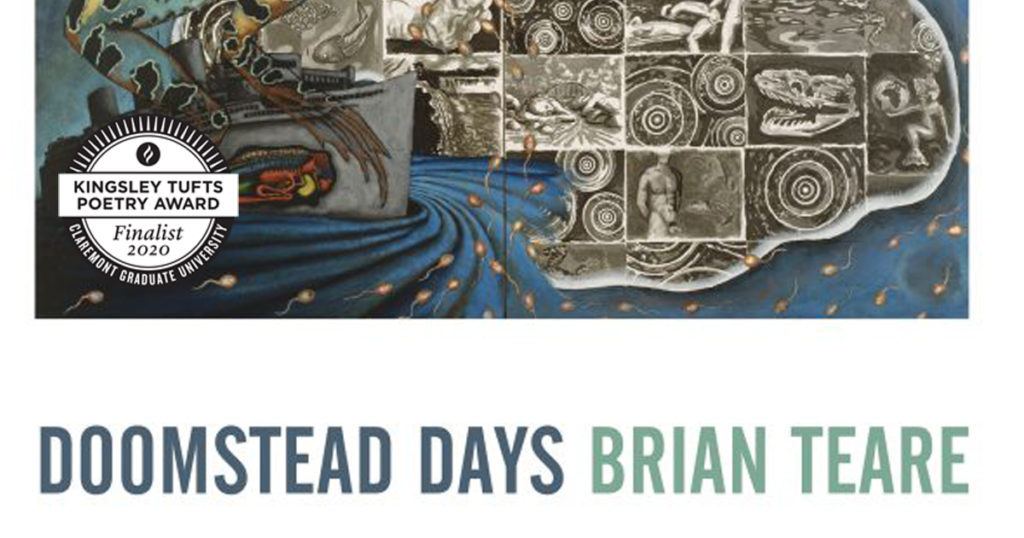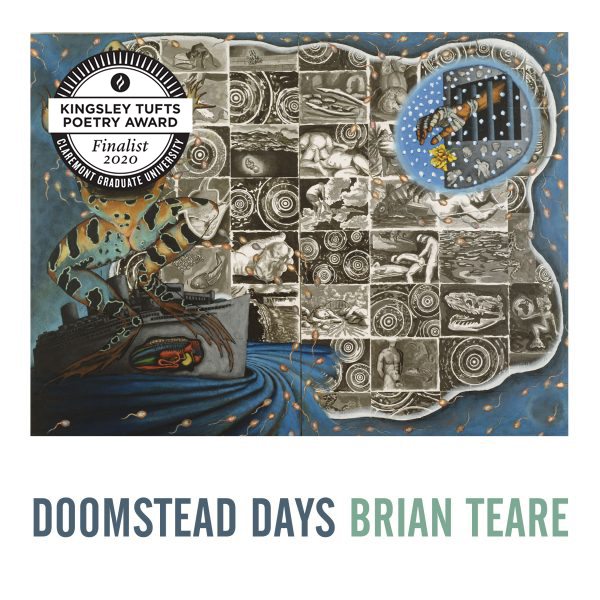Walking through Disaster: Pandemic Habits and Brian Teare’s Doomstead Days

Slowly but surely, it feels like the national lockdown is starting to loosen like the drip, drip of frost thawing as spring approaches. I’m beginning to reflect on what life will be like once quarantine is lifted in earnest. How will the experience of living through this period have changed us? What will we collectively try to forget? What habits should we take with us? I’ve heard the sentiment reflected many times that, in this past year rooted in place, people have found themselves thinking much more deeply about the surrounding environment—natural and otherwise—and how they move through it. This has been borne out anecdotally; I’ve become more familiar with the scents of particular flowers in my area, the shady sitting spots in nearby local parks, which of my neighbors have hummingbird feeders. Just as apparent are the number of people doing the same as I am, finding ways to be outside, going for morning strolls, or setting up lawn chairs in a parking lot.
Back in March of last year, when the experience of living under lockdown was as novel as the virus, going for a walk become something of a national pastime. Many of us who were lucky to be able to live, work, or attend school from our homes found ourselves with nowhere, really, to go. With no destinations to place ourselves on the path of, we still move our bodies through space, looking again and anew at what is around us. With nowhere in particular to be, “you must leave by foot with nowhere to go” (from Ross Gay’s Beholding)—even if just for twenty minutes or so. I found myself needing to put my body in motion for the sake of movement, not to arrive somewhere—but just to be going, to have left.
Walking has had a long and storied entanglement with poetry. As AR Ammons remarked in a 1968 essay, poems and walking resemble one another in significant ways—they are embodied, temporal, imbued with the person and place creating the movement. There is something akin to writing a poem in the act of going for a walk—one goes through a physical ritual, putting one’s body in the space of sensing and noticing new things along well-trodden or undiscovered paths. Moving through our surroundings, like a poem, can remind us what lies beyond our lines of sight and understanding, can put our bodies in the touch with the history that created a place. Walking can be a way of experiencing oneself more acutely as a part of one’s surroundings; tuning into the temporality of a place and our movement through it, we can touch elements of histories that came before us, imagine what will be outlive us long after we’ve gone.

Two-time Kingsley Tufts Award finalist Brian Teare and his 2019 collection Doomstead Days, helps me reflect on how walking and poems can reestablish the connectedness of human bodies to our environment, and in particular, the ongoing and often invisible crises that are affecting our world and our bodies. Drafted while walking, the collection is attentive to the ways in which the speaker and the poem is of a place, and the ways that the relation between human and environment is one of both sustenance and violence. From “Olivine, Quartz, Granite, Carnelian“:
I watch
as if I could forget
the harm that happens where
the world’s flesh meets my flesh;
I walk as if I could
undo the human self
I’ve become & remain
through undoing done to
others.
In the collection’s opening poem, “Clear Water Renga,” the speaker encounters a bird soaked from an oil spill: “it was the first disaster I could walk to, look at until it ceased to seem exceptional, no matter the panic I felt watching an oiled grebe thrash against capture.” The fact of walking to, and through, crises allows or forces the speaker to encounter the harm being done to the environment both as perpetrator and victim, in complicity and in solidarity. The body in these poems can be both a danger to their environment, and in danger because of the crises affecting it.

Thinking about walking to and through disaster in the year(s) of the crisis of a global pandemic has made, for me, more tangible the idea that our bodies, and the way that they move or cannot move, shape and are shaped by disasters in our environment—be it of illness, pollutants, state violence—disasters that we both contribute and are affected by. The way we move is not always benign or uncomplicated, but it does help us see ourselves as of a piece with our surroundings, in relation to each other and the world. Perhaps this has been another reason to go for walks or just to sit and experience place during this time – to remind ourselves of the ways we are entangled with one another, however messy, complicated and unstable those connections may be.
—Lilly Fisher
[Editor’s note: You can find a poem by Danielle P. Williams, “What Poetry and Walking Have in Common,” in the most recent issue of Foothill Poetry, available here, on pg. 34]
Share